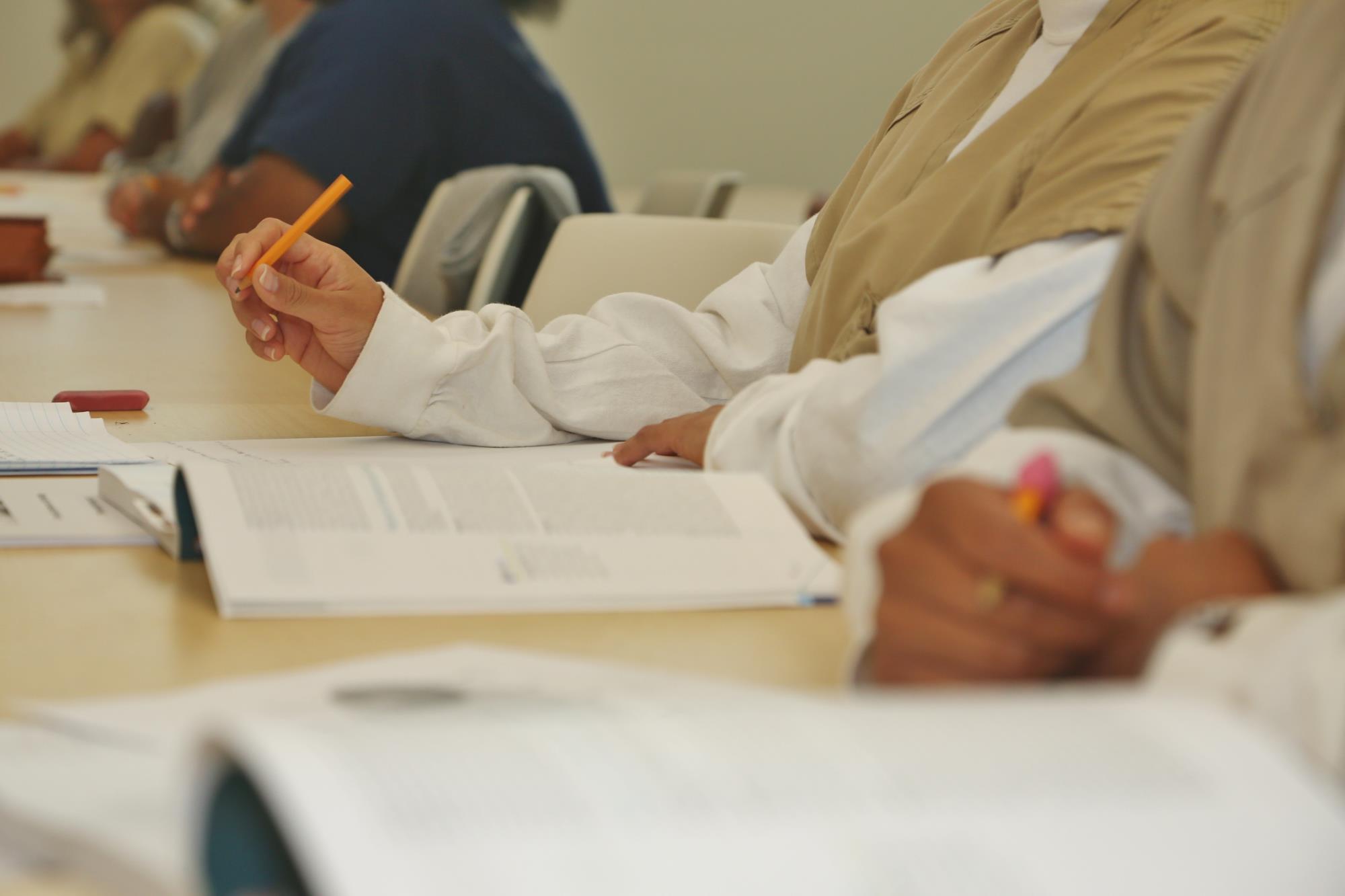In 2023, the Education Department will restore Pell Grant eligibility to incarcerated students and allow any nonprofit higher education facility to launch a prison education program. Hundreds of thousands of incarcerated people will benefit from the proposal, approved in August following several years of pilots at universities around the country.
Pell Grants, which provide nearly $7,000 in federal student aid per student per academic year, are a lifeline to low-income students. No one needs them more than incarcerated students, like myself. Yet eligibility was taken away from us 28 years ago, in the Violent Crime Control and Law Enforcement Act of 1994—more commonly known as the Crime Bill—that would also fuel the rise in mass incarceration.
Prisoners who complete postsecondary education programs are half as likely to recidivate, compared to prisoners who do not complete such a program.
Under the previous federal policy, Pell Grant eligibility to incarcerated students was capped at 12,000 per year. With no such caps in place, nearly 500,000 prisoners will be able to receive the grants. According to the report behind the Education Department’s proposal, 64 percent of prisoners are currently eligible to enroll in a higher education program. Only 9 percent complete such a program.
Each term, the manila envelopes containing my materials and assignments would be “misplaced.”
Without access to federal student aid, and without any personal funds or family support, pursuing my degrees while in prison has been inordinately difficult. I had to write hundreds of letters to would-be sponsors, appealing for the financial assistance that allowed me to pursue my degrees.
Prison officials never made things easy. Each term, many of the dozens of manila envelopes containing my materials and assignments would be “misplaced,” and my outgoing mail held so it didn’t arrive on time. I was fortunate enough to have compassionate and accommodating professors, because the system was literally working against me. My story is not unique.
Colleges and universities creating prison education programs will have to report on their completion rates, as well as subsequent job placement and recidivism rates. But while it’s in their best interest to make correspondence education logistically feasible for prisoners, corrections departments notoriously do not face the same oversight.
Many colleges and universities no longer provide print-based correspondence education, yet many prisons do not permit incarcerated students access to mobile devices, computers or internet. The battles over access to course materials will play out in individual prisons, with some students sure to fall through the cracks because the administrators of their educational program are not prepared for such resistance. The same issues will impede access to and completion of the Free Application for Federal Student Aid (FAFSA), a high-barrier application even for non-incarcerated students.
Though advocates have expressed concern over this issue, little will change unless we start physically empowering incarcerated people’s access to higher education. The system is set up to maintain a status quo where prisoners are not permitted to do much beyond watch television, go to chow and walk around. A status quo where we are denied the tools we need to make something of our time in prison, and will be swiftly returned to it after we leave.
Photograph via San Diego County Sheriff’s Department





Show Comments